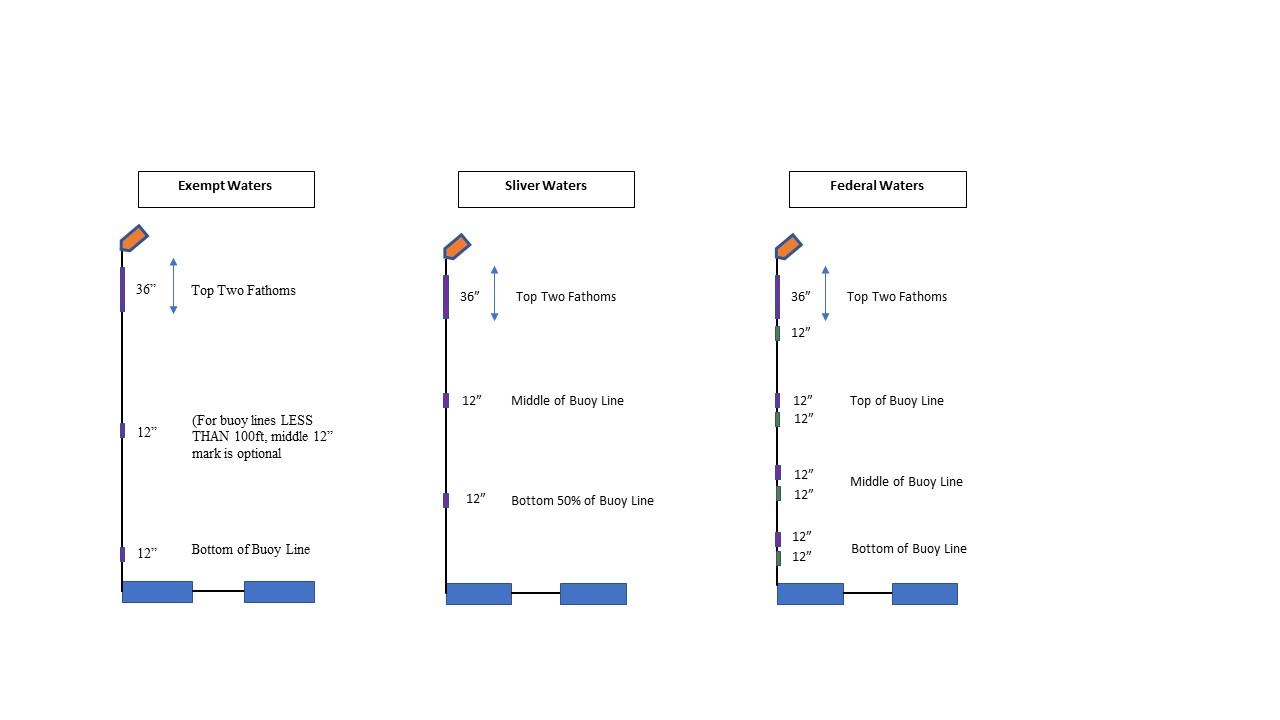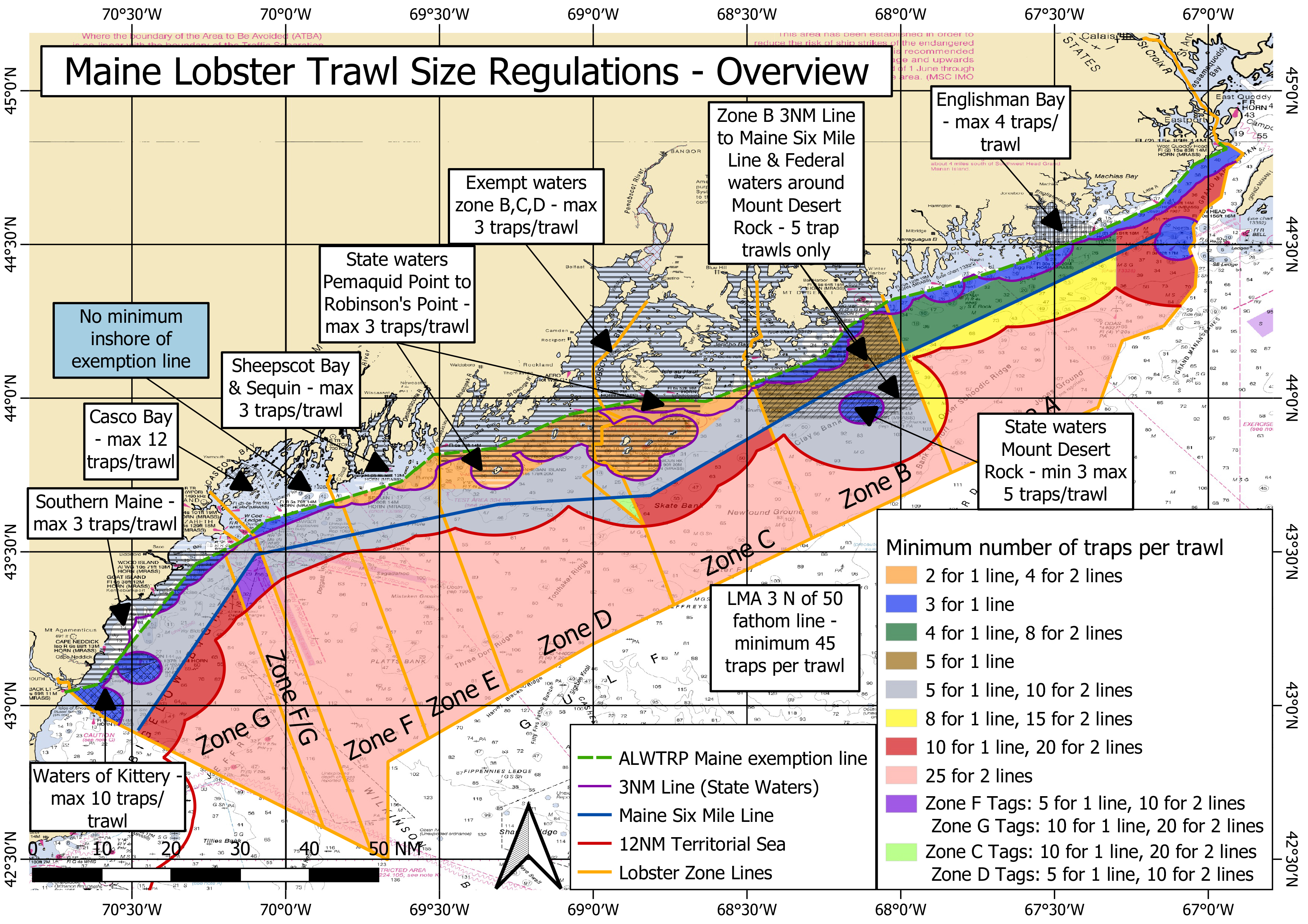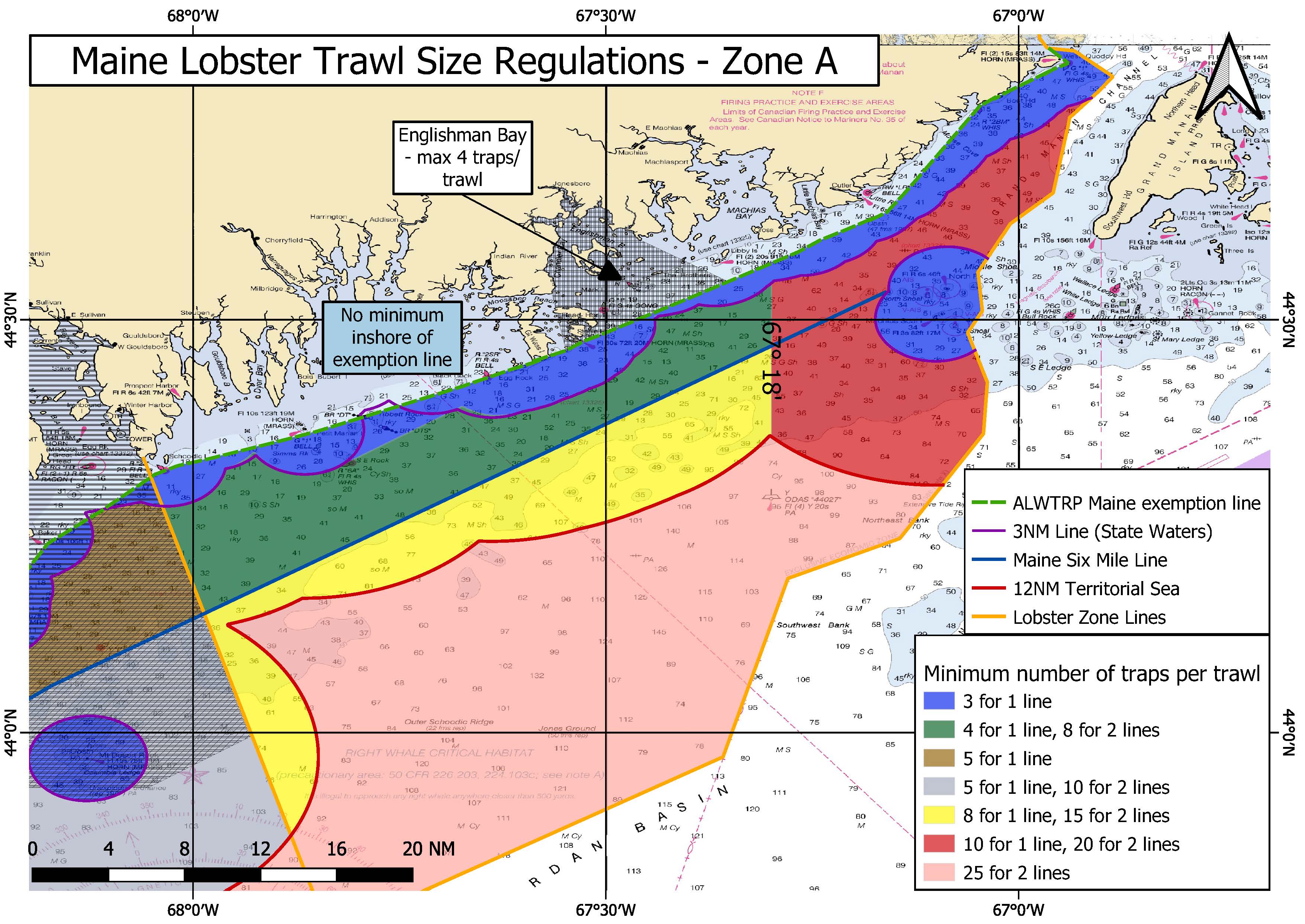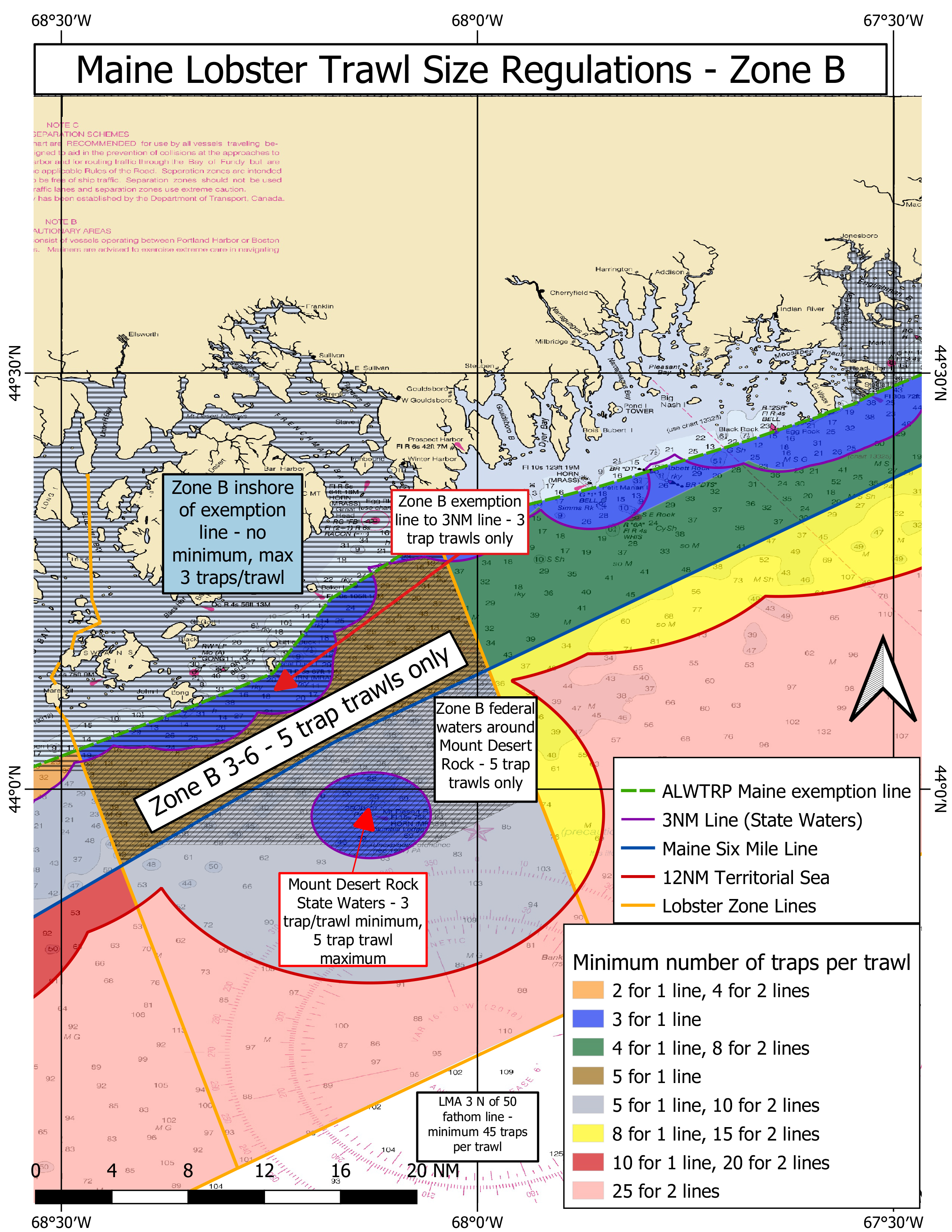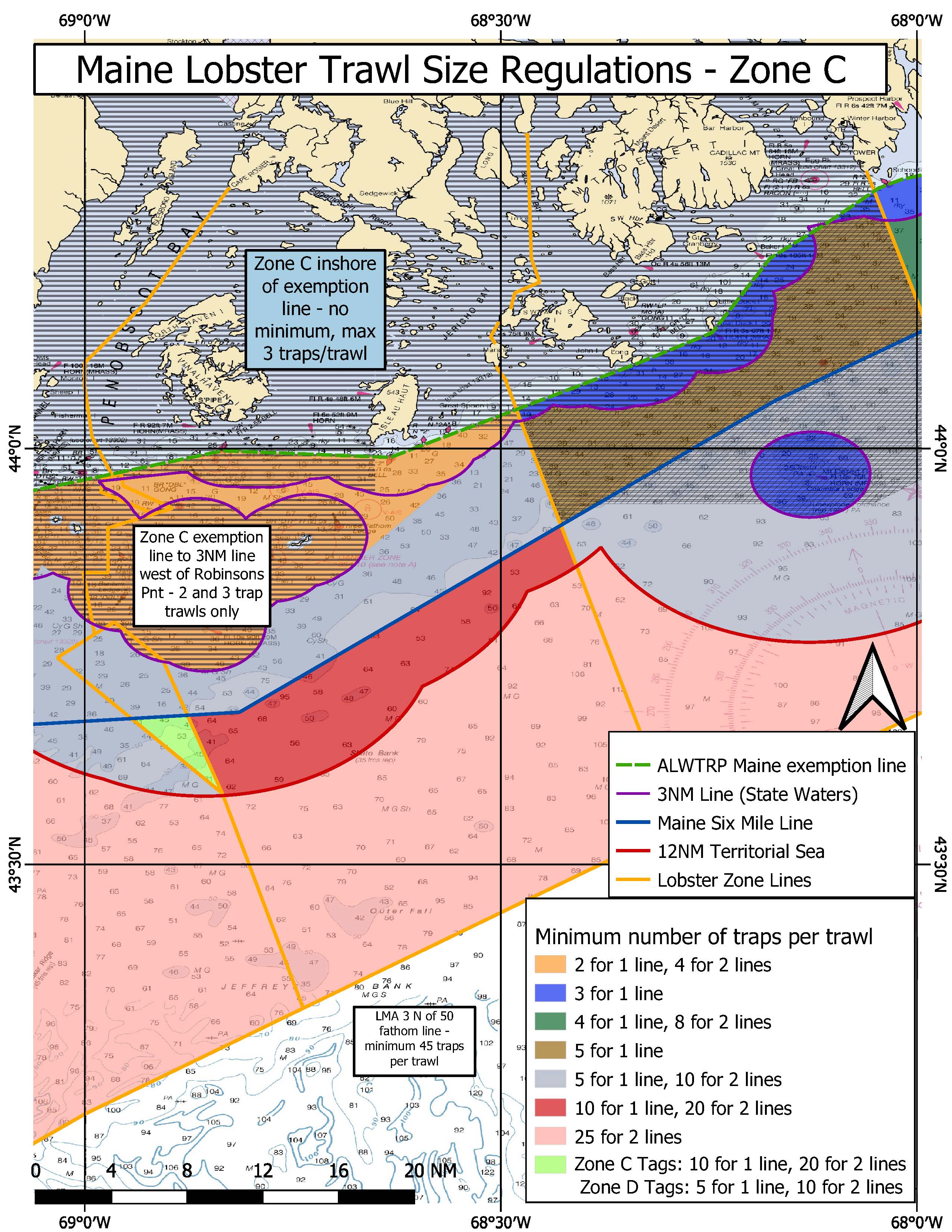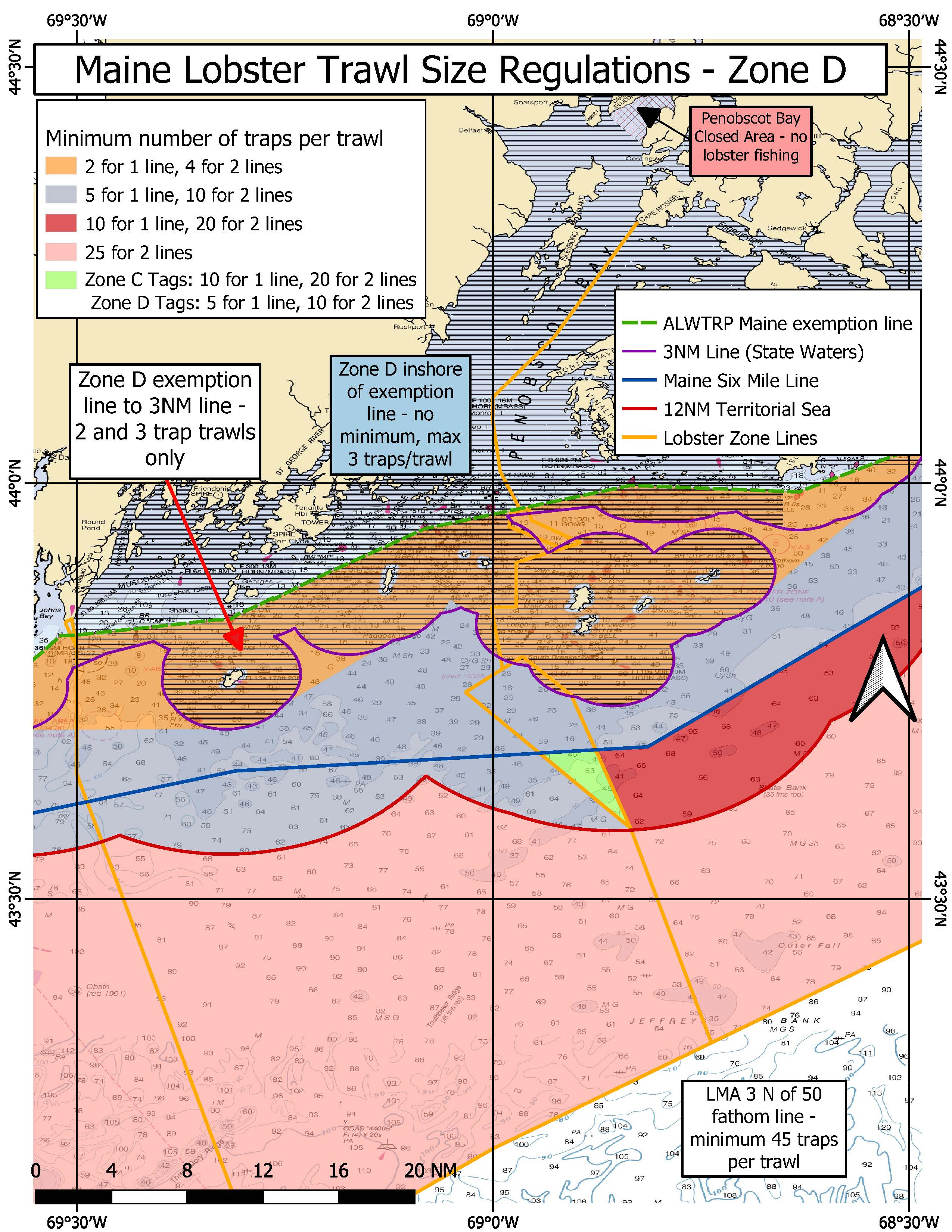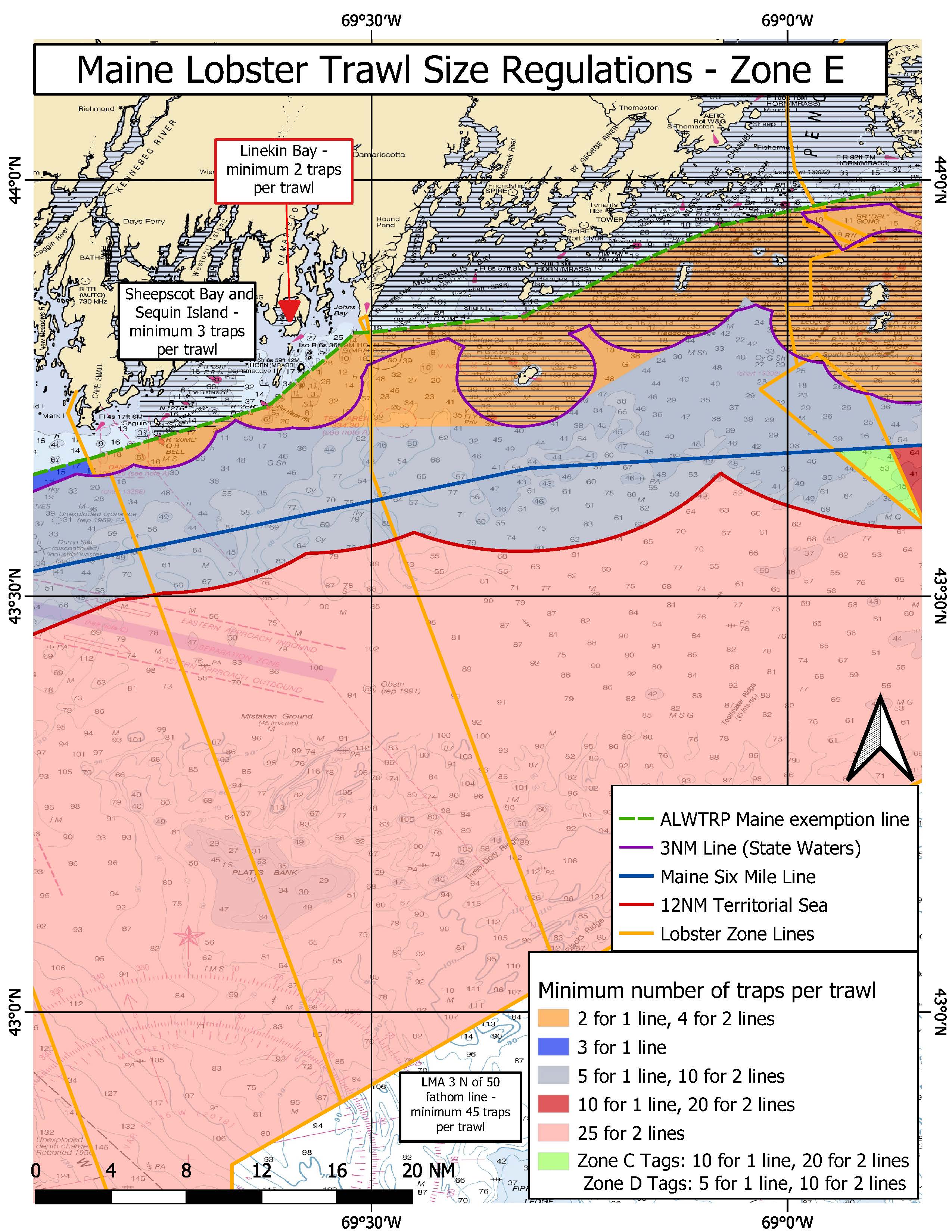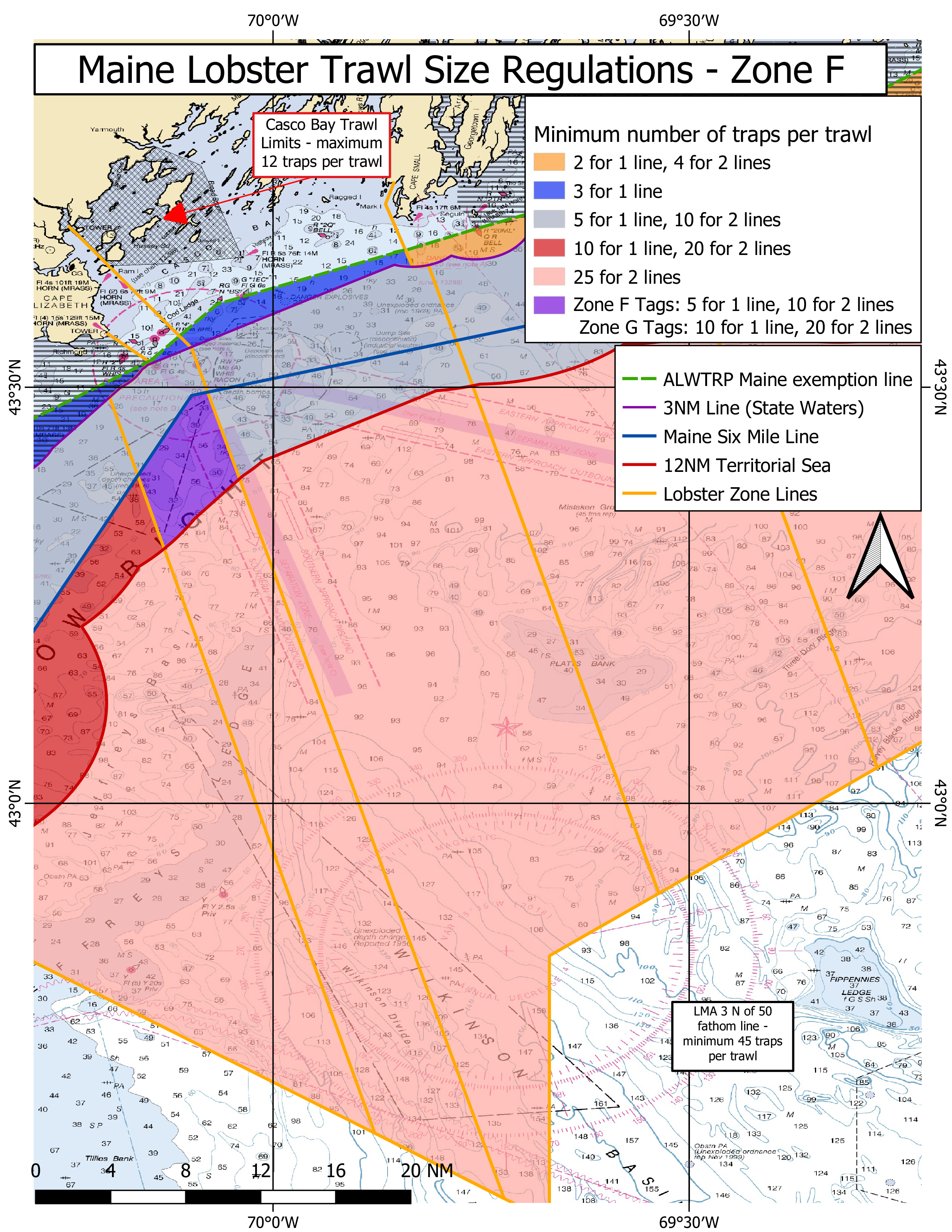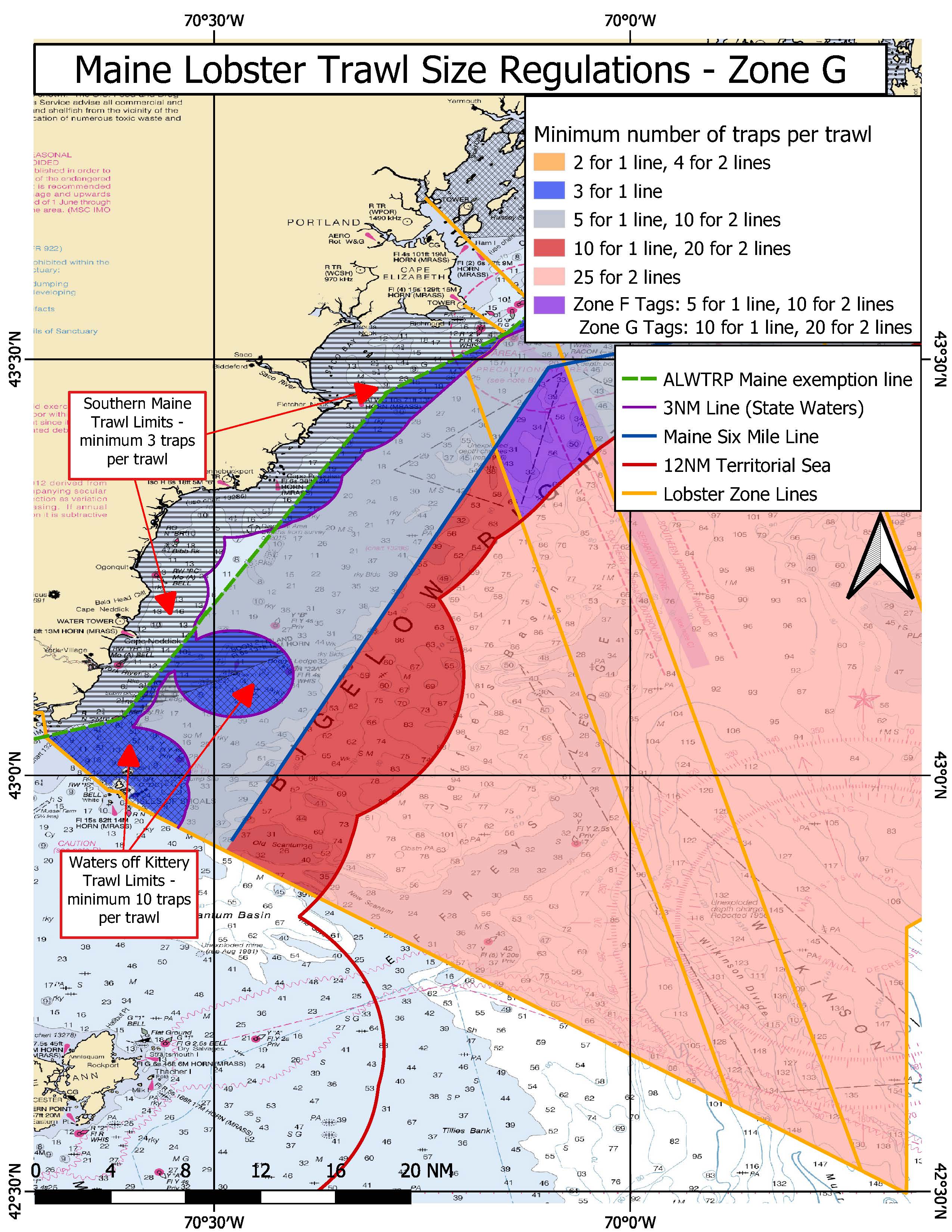Gear Marking, Weak Rope, Trawl Lengths
New requirements for gear marking, weak rope and inserts, and trawl lengths go into effect May 1, 2022 under the 2021 modifications to the Atlantic Large Whale Take Reduction Plan (NOAA).
Below are links to information on each requirement, with illustrations and maps that can be downloaded and printed if needed.
- Gear Marking Requirements
-
New requirements for gear marking go into effect May 1, 2022 under the 2021 modifications to the Atlantic Large Whale Take Reduction Plan (NOAA).
Below is a diagrams that shows the requirements for exempt waters, the sliver, and federal waters. Select the image for a downloadable PDF.
- Trawling Up Requirements
-
New requirements for trawling up go into effect May 1, 2022 under the 2021 modifications to the Atlantic Large Whale Take Reduction Plan.
Below are printable maps that show an overview of the trawling up requirements coast-wide and for each zone. Select each one for a downloadable PDF.
An interactive map of trawl length requirements which start May 1, 2022 can be found here.
Overview
Zone A
Zone B
Zone C
Zone D
Zone E
Zone F
Zone G
- Weak Insert and Weak Rope Options
-
New requirements for weak rope and inserts go into effect May 1, 2022 under the 2021 modifications to the Atlantic Large Whale Take Reduction Plan.
The Atlantic Large Whale Take Reduction Plan final rule adds requirements for weak rope or inserts that break at 1,700 lbs. within the buoy line. The placement and frequency of these 1700 lb. weak points depends on your lobster zone and distance from shore.
The Final Rule also removes the requirement for a 600-lb weak point at the buoy, although it does not prohibit its use. As a note, in Maine state regulations, harvesters in exempt waters must implement one of three gear modifications: 1) all buoys attached to buoy line with 600-lb weak link; 2) all buoy lines made of sinking line; or 3) all groundlines made of sinking line. If a harvester is using the 600-lb weak point as their gear modification, then this will be required in the vertical line.
The Sliver and Federal Waters
In the Sliver, all buoy lines must have a 1700-pound weak insertion 50% of the way down the vertical line or approved 1700-pound breaking strength line in the top 50% of the vertical line.
In Federal Waters, all buoy lines must have 1700-pound weak insertion(s) or approved 1700-pound breaking strength line at the location and frequency specified by Zone and distance from shore below.
The 1700-pound weak link insert requirements by location are as follows:
Zone A West*, B, C, D, E; Federal Waters 3–12 nm:
- 2 weak inserts at 25% and 50% down the line OR
- top 50% of buoy line weak rope
Zone A East*, F, and G; Federal Waters 3–12 nm: 1 weak insert 33% down the line
Beyond 12 nm: 1 weak insert 33% down the line
* Zone A East and Zone A West are defined in Chapter 75.01 (A) (10 and 11) and shown on this chart.
Information on weak inserts and weak rope approved by NOAA can be found on NMFS' website.
State Regulations - Exempt Waters
For exempt waters, in addition to the weak rope and weak insert options approved by NOAA, DMR has included in the state regulation three additional weak insert options to support protection of north Atlantic right whales and to provide flexibility for Maine fishermen. State regulations are effective May 1, 2022, consistent with the federal whale regulation implementation deadline.
-
